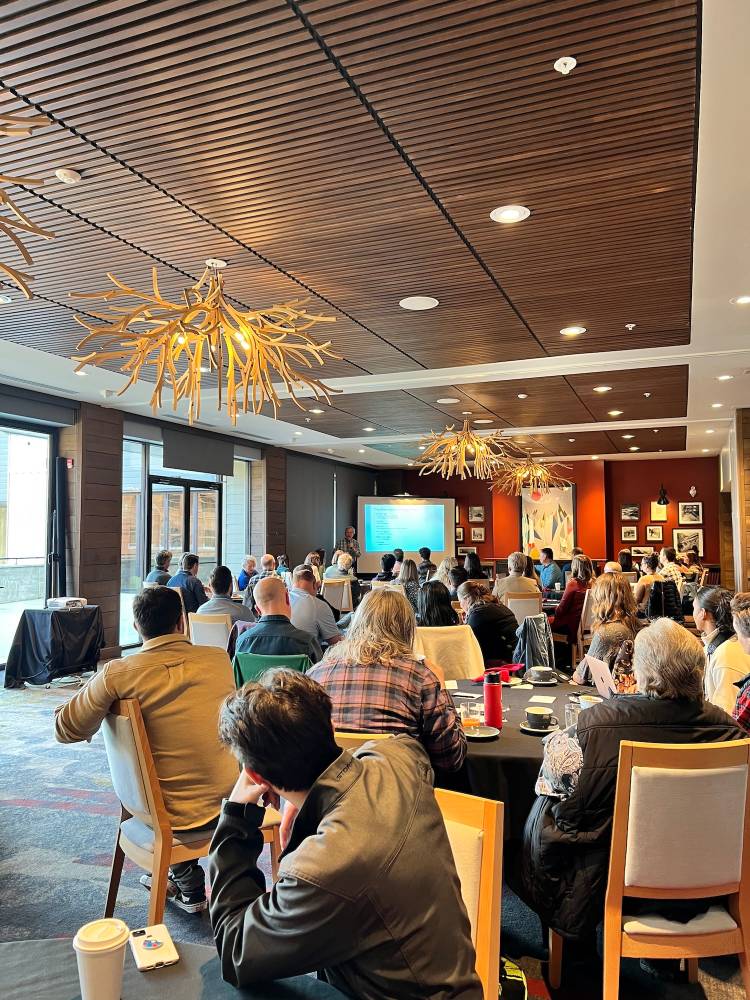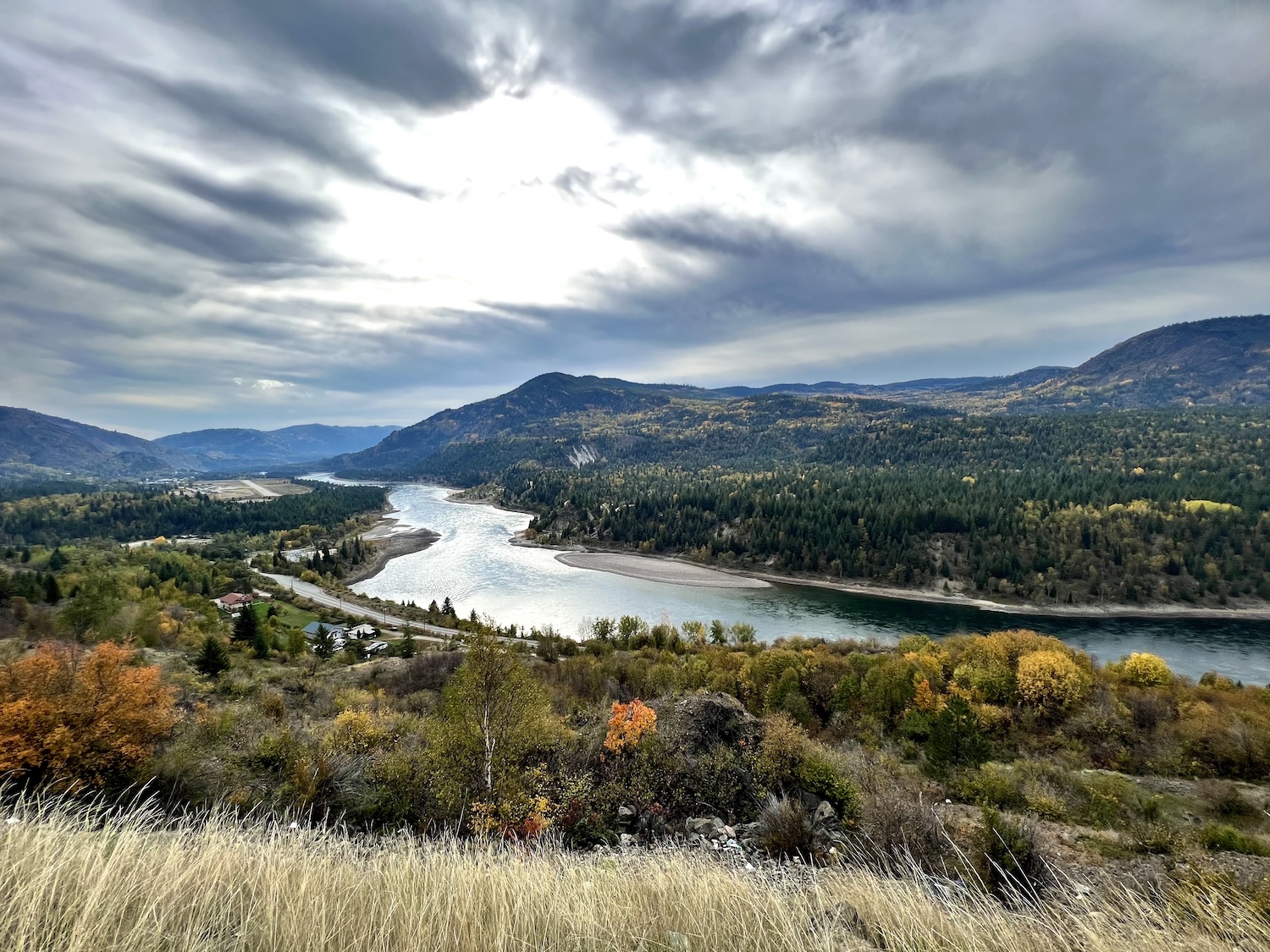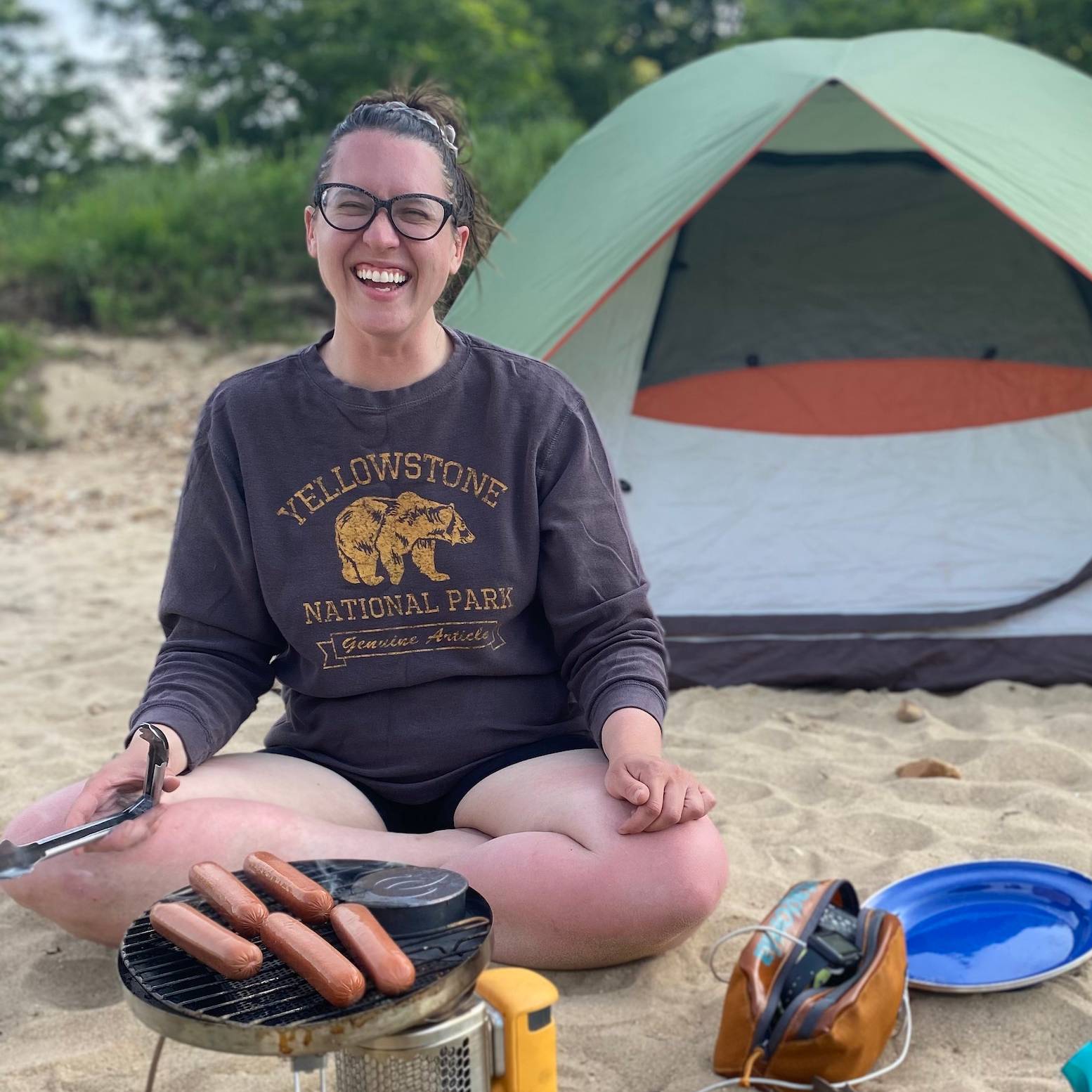
(Photo (left to right): Hilary Patterson, Jordan Katcher, Kaitlin Myers, and Rhiannon Sinclair)
GNAR on the Road!
By: Jordan Katcher, Initiatives Facilitator at the Wallace Stegner Environmental Disput Resolution Program.
This past month, GNAR team member Jordan Katcher took a two-week long road trip on behalf of the GNAR Initiative through Utah, Montana, Idaho, and Canada! Her final stop took her to Rossland, British Columbia, where she had the opportunity to give the keynote at the Mountain and Resort Town Planners Summit, which was titled “Conflict Solves Problems”. Read on to hear some insights from Jordan’s journey!
Hello GNAR community! My name is Jordan Katcher, and I have the privilege of working alongside the GNAR Initiative team. In my full-time role, I serve as Initiatives Facilitator within the Wallace Stegner Center’s Environmental Dispute Resolution (EDR) Program at the University of Utah. I also have the privilege of being an Adjunct Instructor within the City + Metropolitan Planning Department.
Over the last decade, my career path has ebbed and flowed and I’ve had the fortune of supporting gateway communities, Sovereign Nations, and students in a multitude of capacities. As my career has evolved, I’ve come to realize the importance of conflict competency within any and all collaborative efforts. In my current role I’m able to combine my background in planning and community engagement together with conflict competency training and skills-building to help folks better navigate through conflict – and what better avenue to do so than through the GNAR Initiative, which was born out of conflicts occurring within these unique communities!As speaking opportunities and conferences unfolded for our team this fall, several coalesced into a great opportunity that we affectionately called the “GNAR on the Road! Tour.” I put together my itinerary; 2,000 miles traversing through Utah, Montana, Idaho, and British Columbia during the height of autumn, and I was stoked!
- Stop #1) - My first stop was Ogden, Utah, where I presented at the Utah & Idaho American Planning Association fall conference on “Zoom Towns: The New Frontier''
- Stop #2) - Second stop was an opportunity to speak at the annual State of Park County gathering in Livingston, Montana, where I provided insights on how gateway communities across the West are navigating through and innovating within similar challenges facing Park County.
- Stop #3) - Third stop included a short visit with planning staff in Whitefish, Montana, just outside of Glacier National Park.
- Stop #4) - Fourth stop included Sandpoint, Idaho, where I was able to talk to local NGO and project leaders working within Bonner County.
- Stop #5) - And finally, Rossland, British Columbia, where I was privileged to give the keynote at the Mountain and Resort Town Planner’s Summit.
It was amazing to be able to visit these remarkable places and connect with folks on-the-ground working to preserve what makes their communities so special. Learn more about each of my stops below!
Stop #1: Ogden, Utah
My first stop was in Ogden, Utah, at the joint Utah + Idaho American Planning Association fall conference. I had the honor of moderating a panel alongside: Hilary Patterson, Community Development Director for Coeur d’Alene, Idaho; Rhiannon Sinclair, Principal Planner for Agency Landscape + Planning; and Kaitlin Myers, Director for the Moab Area Community Land Trust. Together, we presented on “Zoom Towns: The New Frontier”, where we touched upon the lived experiences of gateway communities during the COVID-19 pandemic.
Hilary touched on how the Zoom Town boom heavily impacted Coeur d’Alene, Idaho, with housing prices skyrocketing as individuals moved into their community. During the height of the pandemic, more people moved to Idaho than any other state - roughly 70% of all moves to/from Idaho were inbound moves. In addition, their local remote workforce comprised approximately 5.9% of workers in 2016 and jumped up to 16.7% in 2022.
Rhiannon then discussed Montanans concerns over a lack of affordable housing and developments as extremely serious problems statewide. In Bozeman, Montana, she shared how this growth limited the ability to retain and sustain high standards of access in a changing and rural community. She showcased how Bozeman is regaining lost capacity by increasing funding and planning ahead; for example, through dedicating funding for equitable maintenance citywide, establishing a Parks + Trails District, and offering cash-in-lieu-of parkland. Kaitlin then described the challenges in Moab, Utah, in finding resiliency and stability for residents in an economy driven by visitors. She showcased how their Envision Moab process helped introduce a new community-focused lens to every project and policy to ensure that local residents aren’t left behind in the changes.
Stop #2: Livingston, Montana
Next up, Montana! The Park County Community Foundation (PCCF) invited us to join them for their annual State of Park County gathering in Livingston, Montana. Each year, PCCF conducts a countywide survey to assess how residents are feeling about the state of their county and the direction it’s heading in.
We started out with a coffee klatch in the morning around attainable housing. Roughly 15-20 folks from across the county shared efforts they’re working on related to attainable housing, which was remarkable! Given the rate of change and growth happening throughout the county, I was also particularly struck by the Park County Conversations initiative, which seeks to build unity within their unique community, one conversation at a time on a range of hot topic issues, including growth.
That evening I got to speak at the We Will Park County event. 180 folks attended both in-person and online, and I was able to share how other gateway communities are grappling with issues similar to Park County. I also highlighted the importance of bringing your community into the process of addressing challenges, and to help them become a part of the problem-solving enterprise. It was inspiring to see the work being done in Park County, Montana.
Stop #3: Whitefish, Montana
I was so grateful that the staff in Whitefish made time for a short visit! I loved meeting with town staff and discussing current challenges they’re navigating related to traffic congestion, housing, and regional collaboration possibilities while brainstorming potential projects for students at both University of Utah and Utah State University. We also discussed the possibility of putting together a research study on what it would take to establish a regional transit system for the county to alleviate growing congestion concerns.
If you have insights for Whitefish on establishing a regional transit system, please reach out to Wendy Compton-Ring, Senior Planner, at wcompton-ring@cityofwhitefish.org.
Stop #4: Sandpoint, Idaho
Moving on to Sandpoint, Idaho!
I had the beautiful opportunity to meet one local leader in particular, who has been instrumental in preserving open spaces for community residents, including the recently opened Pend D’Oreille Bay Trail. We discussed the importance of spreading awareness of local issues within a community to identify and activate potential champions who can help move projects forward.
We also remarked on how intentional and active engagement can propel momentum and support for projects of all shapes and sizes. One way that Project 7B (a non-partisan group of individuals who want to help the residents of Bonner County, Idaho, understand and become more involved in land-use planning) is increasing active engagement through countywide workshops, regular updates on social media, and through providing accessible, easy-to-understand materials on land use issues. Susan Drumheller, their director, actually wrote a blog for us about an online storymap they created to try and simplify sometimes complex topics around zoning, and we worked with 7B in the Spring of 2022 to put on a simple "Planning 101" webinar to help them understand some of the background behind community planning, and why it matters.
Stop #5: Rossland, BC

Last stop - the Mountain and Resort Town Planners Summit (MRTPS)!
If you haven’t heard of MRTPS before, this annual gathering is a small and interactive conference where ideas, questions, and responses flow freely among participants, facilitators, and the host communities. The summit is multi-disciplinary, with programming designed for planners, designers, conservationists, elected officials, and anyone else interested in preserving the uniqueness of their mountain community.
During this year’s summit I had the opportunity to give the keynote, titled “Conflict Solves Problems”. I focused on how planners and elected officials within gateway communities can use conflict to help solve their most pressing challenges, and discussed the need for each and every one of us to develop conflict competency skills as we engage in community engagement work.
If we aren’t comfortable navigating and working through conflict, especially with those who disagree with us, our physiological conflict responses (fight, flight, freeze, fawn) can limit our ability to co-create solutions together. When we understand that conflict “just is”, we can start incorporating conflict competency skills that promote active listening, curiosity, and openness with individuals of all backgrounds. I also had the opportunity to facilitate a three-hour workshop with the elected officials and it was tremendous! We divided our conversations into three topics: attainable housing, polarization, and change/growth. During each topic discussion, participants showcased innovative solutions they’re trying within each of their communities.
Reflection
This entire experience was such a gift! I felt so honored to traverse 2,000 miles around such beautiful landscapes interacting with such beautiful humans that deeply care about their communities. This trip has further inspired me and our team to continue in this work of helping us all collaborate in more effective ways; to evolve out of the archaic ways of engaging with our communities and instead, bringing them into the fold to be an active part of the problem-solving enterprise. Our gateway community leaders are past capacity; responding to challenge after challenge with barely any time to create capacity and they need assistance. They also benefit so much on peer-to-peer opportunities where they can confide in one another and co-create solutions together.
The GNAR Initiative has always existed to meet the needs of gateway communities across the West and now, more than ever, we see the need for increased access to planning and community development resources.
Launching in early 2024, we are very excited to debut the GNAR Academy; a project that seeks to fill in the gap between what gateway communities have the capacity for and what communities need by providing accessible training to help communities better understand and advocate for their own needs. Our goals are to:
- Create low-barrier training that is accessible for gateway community leaders
- Cover planning topics and challenges from a small, rural, gateway-specific lens
- Provide opportunities for communities to network and meet with others working on similar projects
- Increase community capacity to become more self-sustaining and resilient to their unique challenges
Be on the lookout for more GNAR Academy announcements in 2024!
Also, if these travels intrigued you and/or you’d like to talk about these thoughts and musings, please reach out at jordan.katcher@law.utah.edu - I would love to connect with you!

Jordan Katcher, MCRP, is an Initiatives Facilitator with the Wallace Stegner Center Environmental Dispute Resolution Program and Adjunct Instructor within the City & Metropolitan Planning Department at the University of Utah. She earned her Master of Community & Regional Planning from the University of Oregon where she conducted her research on equity, diversity, and inclusion practices involving single identity-based crews within conservation corps nationwide. She also obtained her Bachelor of Arts in Anthropology & English from the University of Virginia. She is a 3x AmeriCorps alum with almost a decade’s worth of community development experience supporting students, tribes, non-profits, and rural communities. As an Appalachian, she deeply enjoys forest bathing, hiking, camping, and kayaking.

